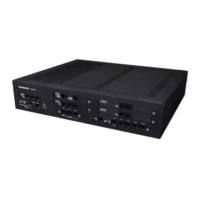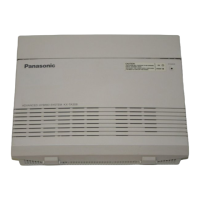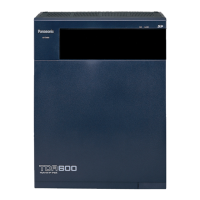Card Maximum Number/PBX Card Programming
V-IPCS4: Virtual 4 IP Cell Station
Interface Card 16
9.18 PBX Configuration—[1-1]
Configuration
—Slot—V-IPCS4
—Card Property
*1
If SIP Extension Type is selected for System Capacity Selection in Easy Setup Wizard. For details, refer to 5.4.1 Easy Setup
Wizard in the Installation Manual.
*2
If IP-Extension Type is selected for System Capacity Selection in Easy Setup Wizard. For details, refer to 5.4.1 Easy Setup
Wizard in the Installation Manual.
*3
If System Resource Type is selected for System Capacity Selection in Easy Setup Wizard. For details, refer to 5.4.1 Easy Setup
Wizard in the Installation Manual.
For more information on the virtual cards and other optional cards, see the following sections in the Installation
Manual:
→ 4.4 Virtual Cards
→ 4.5 Physical CO Line and Extension Cards
For information about cards supported by legacy gateway PBXs, see System Components for Legacy
Gateways in the KX-NS1000 Installation Manual.
Common Programming Reference Items
When programming settings for cards, extensions, and other devices using Web Maintenance Console,
depending on the screen being accessed, the following items may be listed on the screen for your reference:
Item Description
Site Indicates the site number (1–16) of the PBX in the One-look Network where the card,
extension, or device is located. For more information about One-look Networking, see
1.2.3 PBX Configuration Types.
Shelf Indicates the physical or virtual shelf where the card, extension, or device is located in
the PBX.
• Shelf "1" is the physical shelf of the KX-NS1000
PBX.
• Shelf "2" corresponds to the physical shelf of the PBX connected to Legacy Gateway
1.
• Shelf "3" corresponds to the physical shelf of the PBX connected to Legacy Gateway
2.
Slot Indicates the slot number within the shelf where the card, extension, or device is located.
Port Indicates the port number assigned to the extension or device.
Document Version 2016-03 PC Programming Manual 207
9.1 PBX Configuration—[1-1] Configuration—Slot

